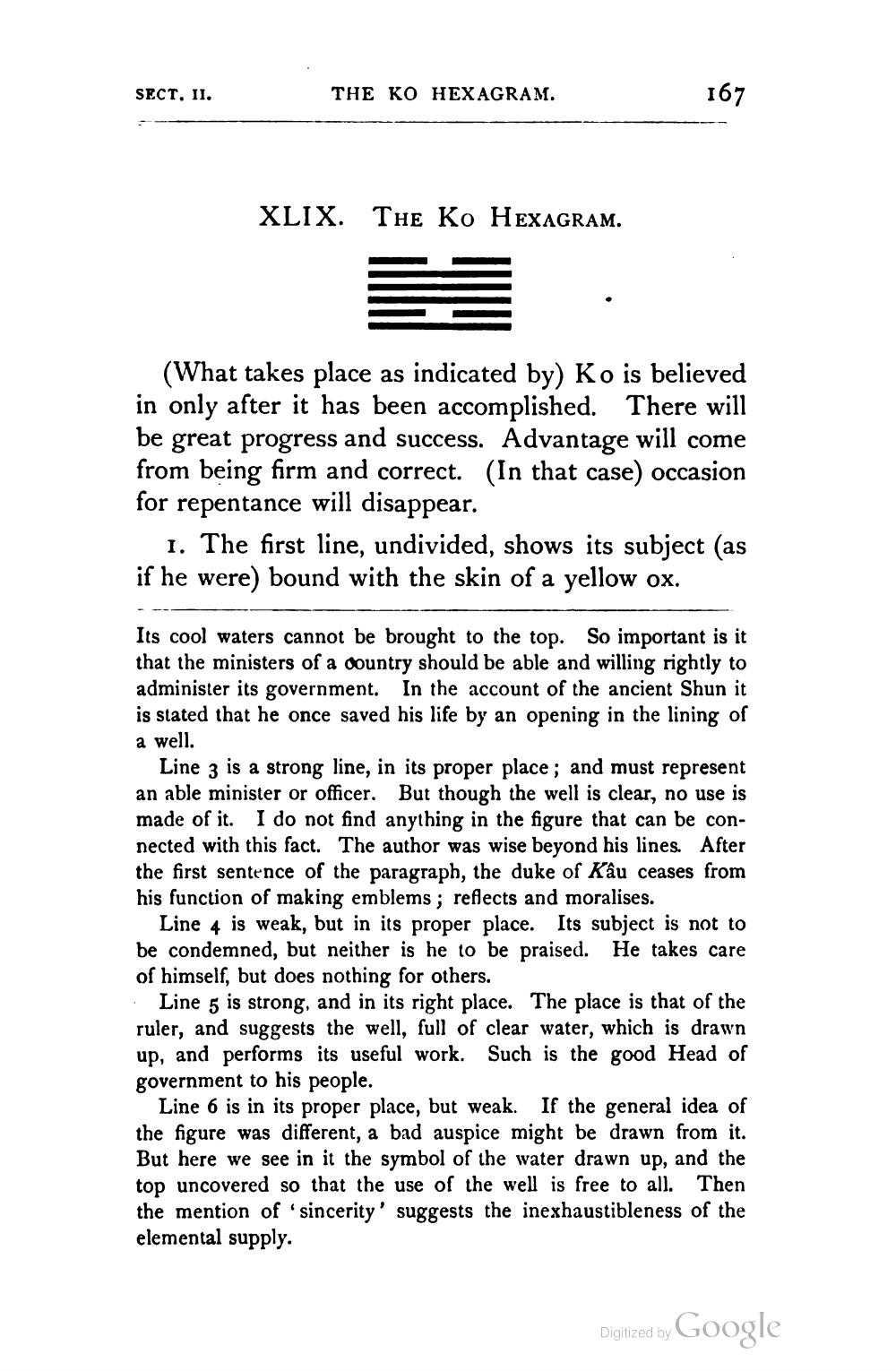________________
SECT. II.
THE KO HEXAGRAM.
XLIX. THE KO HEXAGRAM.
167
(What takes place as indicated by) Ko is believed in only after it has been accomplished. There will be great progress and success. Advantage will come from being firm and correct. (In that case) occasion for repentance will disappear.
1. The first line, undivided, shows its subject (as if he were) bound with the skin of a yellow ox.
Its cool waters cannot be brought to the top. So important is it that the ministers of a country should be able and willing rightly to administer its government. In the account of the ancient Shun it is stated that he once saved his life by an opening in the lining of a well.
Line 3 is a strong line, in its proper place; and must represent an able minister or officer. But though the well is clear, no use is made of it. I do not find anything in the figure that can be connected with this fact. The author was wise beyond his lines. After the first sentence of the paragraph, the duke of Kâu ceases from his function of making emblems; reflects and moralises.
Line
is weak, but in its proper place. Its subject is not to be condemned, but neither is he to be praised. He takes care of himself, but does nothing for others.
Line 5 is strong, and in its right place. The place is that of the ruler, and suggests the well, full of clear water, which is drawn up, and performs its useful work. Such is the good Head of government to his people.
Line 6 is in its proper place, but weak. If the general idea of the figure was different, a bad auspice might be drawn from it. But here we see in it the symbol of the water drawn up, and the top uncovered so that the use of the well is free to all. Then the mention of 'sincerity' suggests the inexhaustibleness of the elemental supply.
Digitized by
Google




